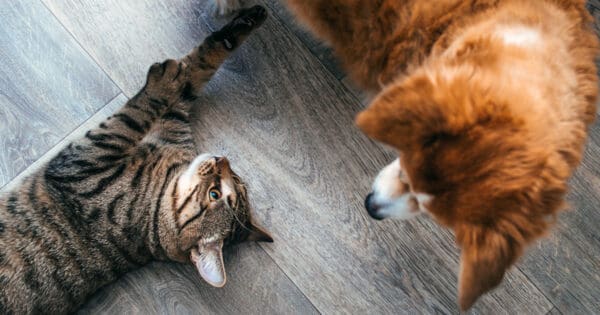
11401 NE 195th St. Bothell, WA 98011
(425) 486-9000 PHONE (425) 486-9002 fax
Notice: Below care sheet is from 2016, and may not reflect up-to-date care information.
White’s Tree Frogs
Natural History
The White’s tree frog (Litoria caerulea), or dumpy tree frog, is native to Australia and New Guinea. The White’s tree frog inherited its name from naturalist John White, who first described this species in 1790. Even wild White’s tree frogs are docile, and often live near human dwellings, eating insects drawn by the light. Larger than most Australian frogs, the White’s tree frog can grow to 4 inches in length. The average lifespan of this frog in captivity is approximately 16 years.
White’s tree frogs can range from blue to green to brown in color, and can change their hue depending on temperature, humidity, environmental surroundings, or level of excitement. Some specimens even exhibit small white dots along their back and head. Due to its physical and behavioral traits, the White’s tree frog has become one of the most recognizable frogs, and is a popular exotic pet throughout the world.
Husbandry
Housing: A single adult White’s tree frog can live in a 10 gallon glass tank or larger. Multiple adults will need at least a 30 gallon glass tank. White’s tree frogs love to climb, so vertical space is better than horizontal space. The four main components of the cage setup are substrate, perches, hiding areas, and a water dish. There are a number of substrate options available for frogs, such as coconut husk fiber (Bed-A-Beast, Eco-Earth, etc), sphagnum moss, or moist paper towels. Any bedding should be cleaned regularly to prevent buildup of mold. Gravel, sand, small pieces of bark and Repti Carpet should be avoided, because they can either be swallowed or irritate the frog’s skin. White’s tree frogs are arboreal, and should be provided with multiple perches and hiding places high up in the cage’s “canopy”. Driftwood, cork bark, and bamboo poles can be positioned at angles to allow the frog utilization of all cage space. Hiding places should be constructed higher up in the cage as opposed to ground level, to prevent prolonged contact with any potential fungi or bacteria present in the bedding. If your frog is frequently hiding on the ground, then the hides you have provided higher up need to be reconstructed to better suit your frog’s sense of security. Arboreal hides can be as simple as a piece of cork bark leaned up against a wall, a leaf draped over a perch, or a crevice made between any of the cage ornaments.
Heating: White’s tree frogs are tolerant of a wide range of temperatures, making them an excellent pet frog for beginners. The ideal temperature during the day should range between 75F-85F, with a basking area of no more than 90F. At night, the temperature can safely drop 10 degrees. A 12 hour day/12 hour night cycle should be followed. A ceramic heat emitter can be positioned above the cage at all times to provide heat support. Blue or red bulbs should be turned off at night to provide true darkness for these nocturnal creatures – despite what packaging may claim, infrared light is easily perceived by frogs and can be harmful to their natural behavior over time. Hot rocks should be avoided. Frogs should never come into direct contact with any heating element. It is important to purchase a temperature gun, or digital thermometers that possess probes, for accurate temperature readings. Plastic dial thermometers, or any thermometer with a fixed placement, are often unreliable and do not adequately gauge thermal gradients inside entire enclosures. A 2.0 UVB bulb should also be provided during the daytime to aid in normal calcium metabolism.
Humidity: Humidity levels can range from 30%-70% in different areas of the cage. A light misting every few days can help ensure that there is always a humid area for the frog to go to. White’s tree frogs do not tolerate soggy, stagnant conditions, so make certain that the cage is not sprayed too heavily and that adequate ventilation is provided. Substrate should be damp enough to clump together when squeezed into a handful, but not so wet that water drips out when doing so.
A water bowl that is always available and cleaned daily is of utmost importance to this species. A few warm days without a water dish can lead to a crispy, dried up frog, and frequent soaks in soiled water can result in nasty infections, which frogs are doubly susceptible to due to the permeability of their skin. Be sure to use chlorine- and chloramines-free water such as bottled spring water, charcoal-filtered tap water, or tap water that has been aerated for at least 48 hours.
Diet
White’s tree frogs typically display a tremendous appetite. They will eagerly accept crickets, earth worms, wax worms, mealworms, silkworms, slugs, moths, and cockroaches. All insects should be gut loaded for at least 24-48 hours prior to being fed to your frog (for more information, see our “You Are What You Eat” caresheet). Pinkie mice as a food item are not required or recommended due to the risk of obesity.
Adult frogs can be fed 3-4 large crickets or similarly sized insect 2-3 times weekly. Juvenile frogs should be fed on a daily basis, but in smaller quantities. Obesity is a common problem in captive White’s tree frogs, but can be avoided by not feeding too often or too much.
Adult frogs should have their food coated with reptile calcium powder once every other feeding, and a reptile multivitamin should be used on the food once weekly. Juveniles should have their food supplemented with calcium each feeding, and vitamins once weekly.
Handling
While White’s tree frogs are docile, too much handling can be damaging to the skin of most amphibians because of the oils on our hands. Be sure to only handle White’s tree frogs with gloved hands. White’s tree frogs can be jumpy, so be sure to always place one hand in front of their face in case they feel the need to leap. Always wash your hands after handling frogs, as the secretions from their skin can be irritating to our eyes and mouths.
Common Medical Issues
Bacterial Infection: Frogs are regularly exposed to bacteria, but typically the bacteria is fought off by the immune system. If the frog’s body is stressed and the immune system is depressed, bacteria can invade. Stressful conditions such as foul water, improper temperatures, and overcrowding can depress a frog’s immune system. Signs of bacterial infection are varied, but can include loss of appetite, cloudy eyes, redness on the belly and thighs, and frequent shedding of skin. A particularly lethal infection, known as Red Leg Disease, is caused by the bacteria Aeromonas hydrophila. It appears as a dark reddening of the skin, particularly on the belly and underside of the thighs. Frogs that get this disease tend to act apathetic and lazy. If caught in its early stages, Red Leg Disease can sometimes be treated by a qualified veterinarian.
Impaction: Because of their strong feeding response, White’s tree frogs can occasionally swallow items which are non-digestible, such as gravel or chunks of bark. This foreign body can cause impaction in the gut, which can lead to constipation, loss of appetite, and possibly death if not treated.
Obesity: For their size, adult White’s tree frogs require relatively little food to maintain healthy weights. Many owners will feed adults on the same schedule of a juvenile, but most of the food that adult White’s tree frogs consume is converted to fat rather than bone or muscle. Adults should be fed no more than once a week, and fatty food items such as waxworms should be fed sparingly.
March 30, 2015
Content of this Care Sheet Courtesy of:
The Center for Bird and Exotic Animal Medicine
11401 NE 195th St. Bothell, WA 98011
(425) 486-9000 PHONE (425) 486-9002 fax



